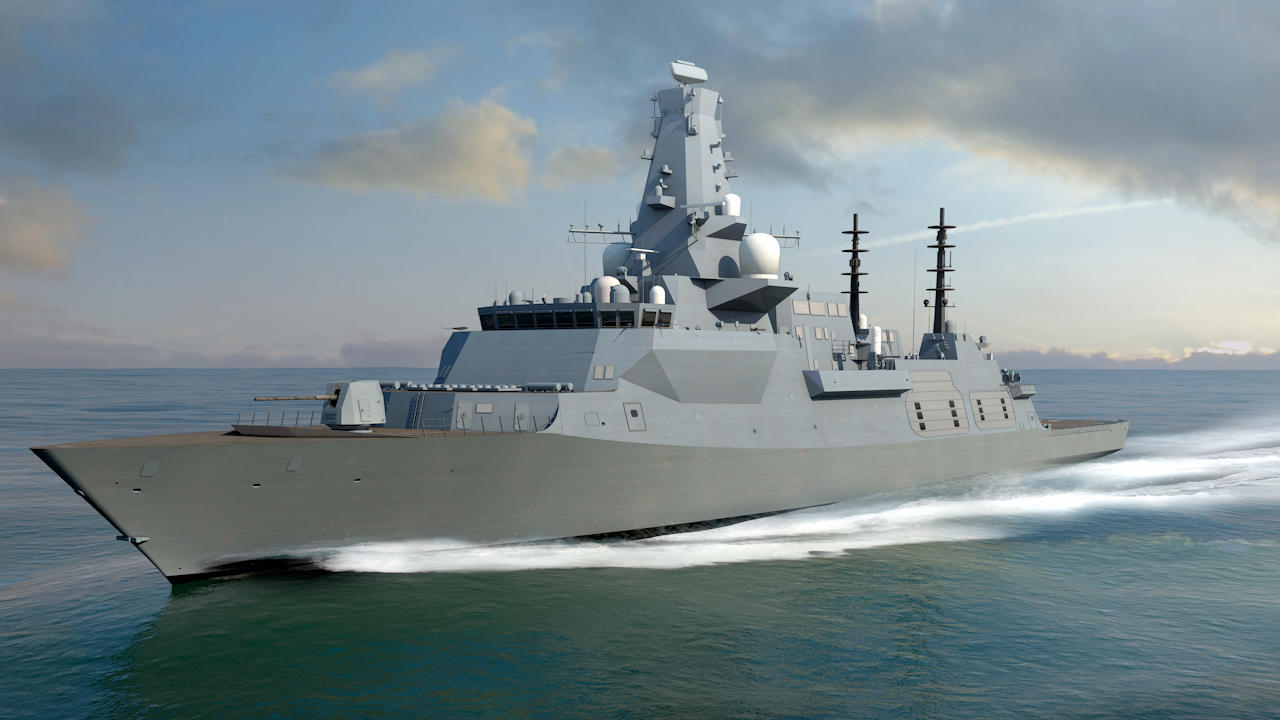Hybrid ships in two years, hybrid airwing in five: Jenkins sets out vision for Royal Navy
First Sea Lord General Sir Gwyn Jenkins has set out his vision for the Royal Navy with the creation of a hybrid fleet of crewed, uncrewed and autonomous systems.
"This is not only a technological shift," he told the audience at the DSEI conference in London. "It is a strategic transformation in how we project power, preserve lives, and adapt to the pace of modern warfare."
Part of this transformation will be the addition of the City-class frigate, known as the Type 26, which Gen Sir Gwyn said was the most advanced anti-submarine frigate in the world.
A hybrid Navy with autonomy in mind
With an acoustically quiet hull to reduce underwater noise, a towed sonar array designed for effective anti-submarine warfare and BAE Systems' Artisan 3D surveillance radar, the Type 26 has been specifically designed to hunt for enemy submarines.
There will be eight ships in total entering the fleet, with the first three - HMS Glasgow, Cardiff and Belfast - expected before 2030.
A further five ships - HMS Birmingham, Sheffield, Newcastle, Edinburgh and London - will join after 2030.
The Type 26 will sail with two uncrewed escorts, which will utilise AI to provide a three-ship task group, assisting in its sensors and decoy capabilities.

"If this sounds fanciful, it is not," he told the audience. "It is my aim to have the first of our uncrewed escortships sailing alongside our Royal Navy warships within the next two years."
Gen Sir Gwyn also promised the Navy would have a hybrid airwing by the end of the decade.
"When the Carrier Strike Group returns to the Indo-Pacific for what I hope will be its next episodic deployment, its carrier airwing will be almost unrecognisable, with a fusion of crewed and uncrewed platforms optimised for speed, survivability, adaptability and combat power," he said.
The first step will be the launch of a jet-powered collaborative drone, which will be demonstrated from a Queen Elizabeth-class carrier as soon as 2026.
A new concept aimed at building a defensive shield stretching from the mid-Atlantic to the Norwegian Sea, known as Atlantic Bastion, will bring a network of crewed and uncrewed systems equipped with advance sensor systems.
They will have the ability to find, track and - if needed - attack hostile submarines.
The first sensors, that form as part of Project Cabot and a central part of the Royal Navy’s proposition in the Strategic Defence Review, will be in the water within a year.
The Navy’s partnership with Norway will also deepen further. Along with selling five frigates, the UK plans to create a joint interoperable 13-frigate force that will patrol the High North and Atlantic.
Norwegian sailors will be aboard the City-class frigate HMS Glasgow when she goes to sea and Norway may also join the Atlantic Bastion construct.
All major programmes in the future will be developed with autonomy at their core, and both the Multi-Role Strike Ships (MRSS) and the Type 83 destroyer will be integrated with AI and support for autonomous systems.
"This is not a distant aspiration, this is a necessity now," Gen Sir Gwyn said. "This will create a larger and more lethal fleet with greater agility and resilience, and it is a move that will start while I am First Sea Lord.
"We will, all together, need to lead our allies into a different way of warfare, rediscover how to fight at scale and have the courage to transform so we can win that fight.
"Lead. Fight. Win."









